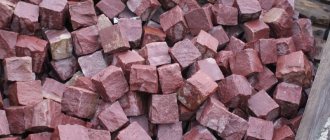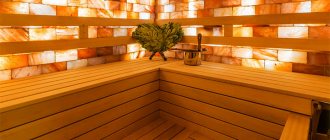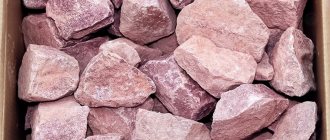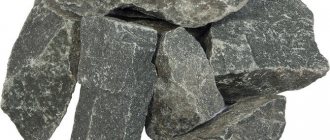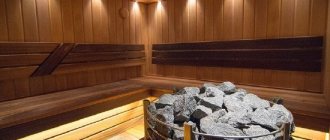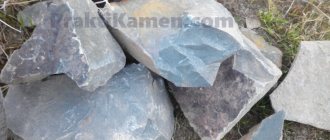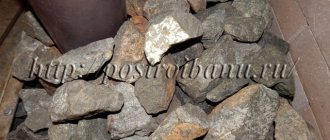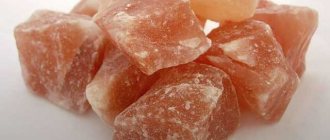Crimson quartzite stone is a rock. In other words, it consists of several minerals, the main one being quartz. This is where the name actually comes from. Topazes, corundum, sericite, pyrophyllite, feldspar, and talc are mixed with quartz in small quantities. When sandstones recrystallize, this mixture is formed. This metamorphosis occurs under the influence of temperature or pressure.
Description
Crimson quartzite, reviews of which are listed in the article below, occupies a separate place among the huge number of types of Karelian minerals. This is a unique stone due to its properties. It is also called porphyry, or Shohan porphyry (due to its external resemblance to the porphyry of Iran). It means “royal stone”.
The mineral combines very high strength, wear resistance, hardness, and also a beautiful appearance.
Crimson quartzite, as demonstrated by medical research, has healing properties. Thus, it stabilizes blood pressure, eliminates ailments in weather-sensitive people caused by weather changes, and also relieves pain in the joints and lower back.
In the bathhouse, Shoksha crimson quartzite makes the steam very light. This effect is achieved due to the low thermal conductivity and high density of the stone, which together gives excellent heat transfer over time.
Historically, this mineral was intended to decorate various majestic structures and buildings in St. Petersburg and Moscow. Perhaps this is the most solemn nugget from the Onega region.
Shokshin crimson quartzite has always been highly valued, which means it was used for finishing particularly significant architectural projects. Based on its mineral composition, it is considered almost pure quartz (about 98%). It is an environmentally friendly material, has almost no radioactivity, and this makes it possible to use it for cladding offices and residential premises. Good resistance to high temperatures provides advantages when using the mineral in sauna and bathhouse stoves.
Specifications
The stone is very practical
The description of natural material includes:
- fire resistance;
- durability, which is ensured by tightly intergrown quartz inclusions;
- resistance to mechanical damage;
- high water resistance;
- low degree of radioactivity;
- high degree of hardness;
- low thermal conductivity;
- resistance to external aggressive environments;
- retains its decorative effect for a long time;
- in terms of crushability and frost resistance - 1st class.
- the ability to maintain high temperatures for a long time.
Mineralogical natural bath material must be regularly checked for chips and cracks. The disadvantages of the material include the high probability of “crumbling” as a result of heating and polishing, which is typical for some samples of the mineral.
Chemical properties
Quartzite is obtained from sandstones consisting of large fragments of sedimentary origin held together by natural cement. Some large sandstone fragments are preserved during recrystallization. Consequently, quartzites often have an uneven structure. Crystals of mica and quartz are clearly visible in the mineral. The bonding of such particles of different sizes makes the stone very strong.
The strength characteristic is directly related to the composition of the stone, since quartz (its main component) has a hardness rating of 7 on the Mohs scale. At the same time, topazes, which are also included in quartzites, occupy the eighth line on the scale. The corundum mixed into the rock is only one point inferior to diamonds, the record holders for hardness, whose index is 10 points. In total, the hardness of quartzites is approximately 8 points.
In addition to high strength, crimson quartzite, the properties of which are described in this article, is resistant to temperature. Its negative values have no effect on the stone. Fire resistance is also impressive. The mineral begins to change only at 1770˚C. This resistance to heat makes the stone an excellent raw material for the construction of steam rooms. Raspberry quartzite for a bathhouse, reviews of which are always positive, makes it durable and safe. With active exploitation, the service life of the rock is about 200 years.
The stone does not care about high humidity. The mineral is not affected by various chemical reagents. At the same time, the rock does not react with acids and alkalis. But crimson quartzite is in no hurry to succumb to humans. Due to its increased hardness, it is very difficult to process, which significantly increases the price of products made from this rock. People tend to buy it for special occasions. For example, Napoleon's sarcophagus was made from this stone.
Varieties
Crimson quartzite is often confused with classic quartz. But upon closer examination, the difference between quartz and quartzite is obvious:
- quartz is a pure crystalline formation that has the appropriate shape and relatively transparent thickness (white or yellow impurities are possible);
- quartzite is a formation resulting from a volcanic eruption, a block of stone with admixtures of quartz crystals.
In appearance, crimson quartzite resembles marble, while pure quartz is not crimson or pink, but very light, almost transparent. There are specimens of quartzite with a purity of almost 98%, but they should look the part: pronounced large pieces of crystals with only a slight inclusion of dark. Often, claims of 98% purity of a rock are used by marketers to attract buyers. The most common type of quartzite contains only 70-75% pure quartz, its main difference is the color. A pronounced purple or crimson tint indicates that there is little mineral in the rock, since it does not give a similar color.
As for the subtypes of crimson quartzite itself, experts distinguish:
- mica type;
- pomegranate;
- hornblende.
The classification is based on impurities, which can be up to 30%. For example, the mica species contains a large percentage of mica in its composition.
The breed may also differ depending on the place of extraction. In Russia, the most famous deposit is the village of Shoksha in Karelia, on Lake Onega. The purest subtype of quartzite, called Shokshinsky, is mined here. There are other deposits, in Russia there are just over 30 of them.
Material
The mineral is a natural natural stone. It is characterized by a quartz homogeneous composition. Often mined in Karelia. It was used to decorate significant architectural buildings (in St. Petersburg it was used to decorate St. Isaac's Cathedral, or rather its altar, the Kazan Cathedral, and the Winter Palace). This environmentally friendly and beautiful material with excellent physical and mechanical properties can be used for stoves in baths and saunas.
Distinctive features of the mineral:
- has a low water absorption rate;
- has high strength;
- durable;
- has low abrasion.
Selection of stones for baths and saunas
When selecting a suitable material for a heater, it is necessary to take into account the following nuances:
- Strength of the material;
- No unpleasant odor after heating;
- Low water absorption;
- Uniformity of structure;
- Heat capacity.
If the material is not selected correctly, it may crack and shoot out fragments during heating. Many minerals release toxic substances when heated. You should not use pebbles whose properties have been little studied. It is better to select medium-sized materials for electrical equipment; for wooden ones, you can combine large and medium-sized minerals.
Application
Before laying in a wood-burning or electric stove, crimson quartzite for a bath must be washed with water to remove dust, dried, and damaged and small stones must be thrown away. When placing in a kiln, there should be a small space between the minerals for free air circulation. In this case, the flat, largest stones should be placed in the lower part, and small ones - in the upper part.
The distance between the heating elements in electric ovens when laying stones should remain unchanged. In this case, the heating elements of electric heaters must be covered with minerals (the ideal distance is about 5 centimeters above the heating elements).
How to use the stone?
Everything here is quite simple: first you need to carefully examine all purchased copies. As a rule, defective ones are immediately noticeable: large cracks, unsightly shape, other damage on the surface - these can be safely thrown away immediately, they will be of little use.
You can arm yourself with a hammer and tap all the pebbles - the ringing test is a good way to reject low-quality material. For use in the oven, both the regular chopped version and the boned version, which looks more attractive, are suitable. Of course, it is also necessary to line the stove with bricks so that the high temperature in the steam room remains longer. What's next?
- thoroughly rinse the selected pieces;
- dry thoroughly;
- place in the oven, maintaining a certain distance between the specimens - this way air will circulate freely between them during the process;
- Also observe the ranking of the size of the stones: large ones are at the bottom, while small pieces should lie on the surface.
Stone in history
This is an amazing stone that, by a fortunate coincidence, has become a symbol of prosperity and luxury. By decree of the tsar, it was prescribed to be used in the nineteenth century exclusively for significant construction projects, therefore, as mentioned above, it can be seen in the decoration of the facades and walls of the Winter Palace, Kazan and St. Isaac's Cathedrals, Mikhailovsky Palace and the Moscow Kremlin.
In addition, it was used to create Napoleon's tomb. The lid and base of the sarcophagus were carved from solid pieces of crimson quartzite. This was a gift from Nicholas I. The delivery of these minerals from Karelia to the Russian treasury cost a lot of money. But it should be noted that the monument to Nicholas I was also made of crimson quartzite.
Prices for this stone are still very high - from 10,000 rubles per ton.
How to get to the Shoksha quartzite quarry in Karelia
The crimson quartzite deposit is located in the village of Shoksha, Prionezhsky district, Karelian Republic (GPS: 61.455000, 35.040000).
You can get there as part of a tour group or on your own by car or bus. In the first case, you need to travel 64 km along the route Petrozavodsk - Kvartsitny along the road 86K-224. And in the second, you need to take a bus from Petrozavodsk to Kaskesruchey and get off at the “Kvartsitny” stop. For a comfortable visit to the quarry, it is recommended to have comfortable clothes and shoes with stable soles.
Raspberry quartzite for a bath: reviews
Reading reviews about this mineral, we can conclude that it is chosen by those who often do not want to buy stones for a bath and are looking for a “durable” option. This stone is able to outlive its “brothers” in all types of bathhouses. It is interesting that pink quartzite is liked by people who care about their health and value the bathhouse for its healing properties - according to many, the stone normalizes blood pressure, improves blood composition and circulation, and eliminates lower back pain and muscle pain.
It is purchased by those who are very sensitive to weather changes, because, as they say, it makes it possible to get rid of this ailment. Of course, there are also negative reviews. However, most of them come down to the very high cost of the stone. Not all bathhouse owners can afford it.
Useful qualities of quartzite
Stones for baths and saunas, crimson quartzite has unique healing characteristics. When heated and when interacting with water, it releases ozone. The indoor air becomes fresher and enriched with oxygen. The electromagnetic vibrations that are created on the surface of the pebble have a positive effect on the energy structure of the body and are able to correct it.
The mineral should not be overheated. With large temperature changes it may crack. Therefore, it is necessary to periodically go through the basket and remove deformed stones. They have a beneficial effect on the respiratory system; doctors recommend keeping minerals near the chest. Gems contribute to a person’s speedy recovery. Quartzite rejuvenates the body, cleanses the bronchi and lungs, saturates the blood with oxygen, and improves immunity. Many people drink quartz water. It is obtained by settling the liquid in a container with stones. It is considered biologically active and is used in the treatment of many diseases.

